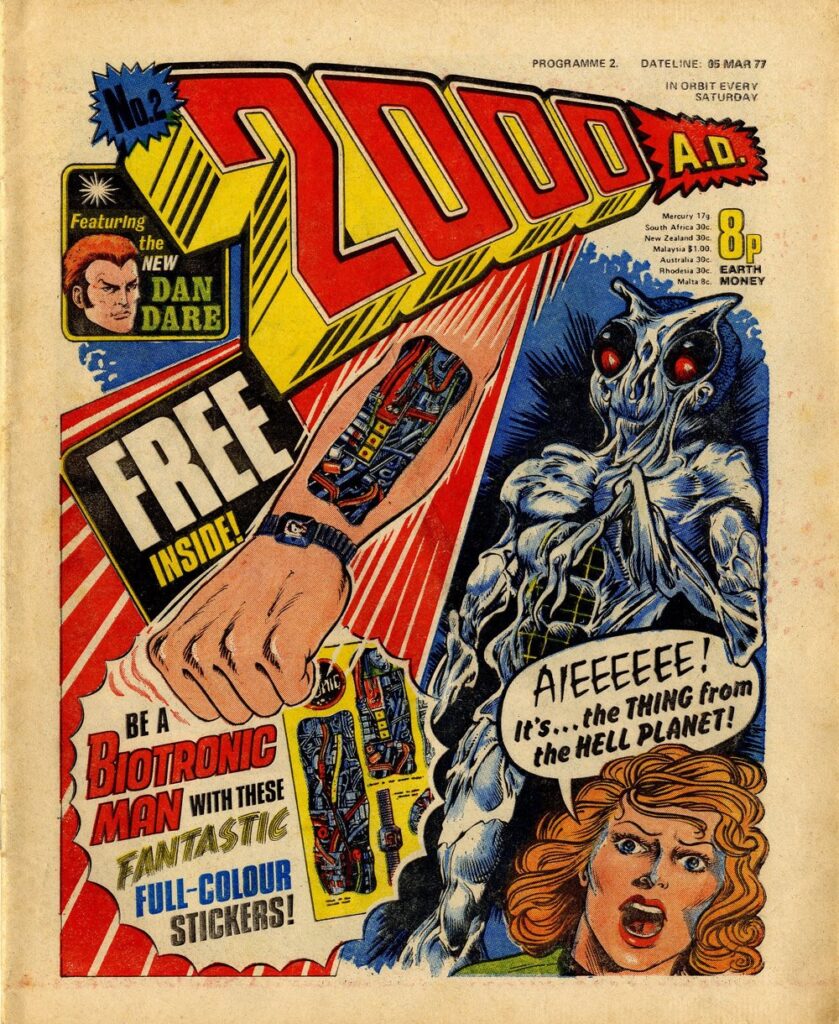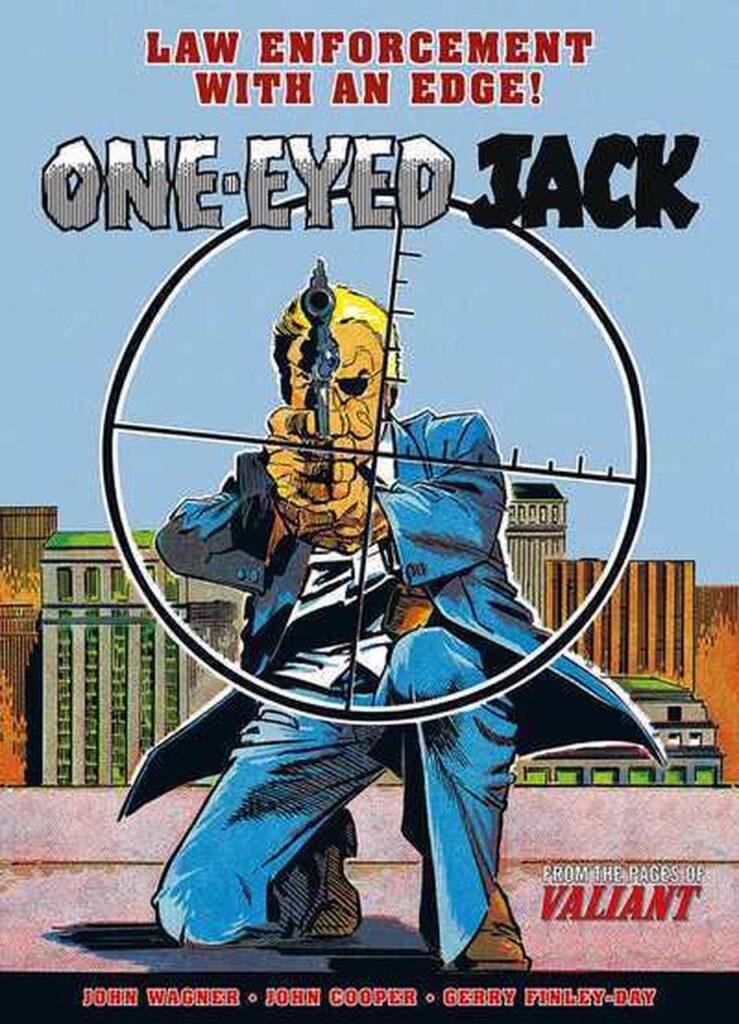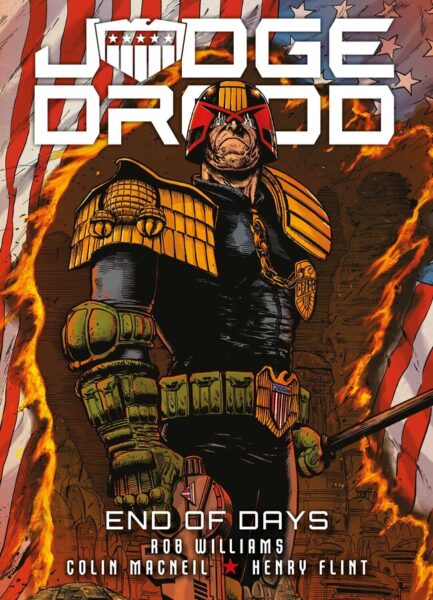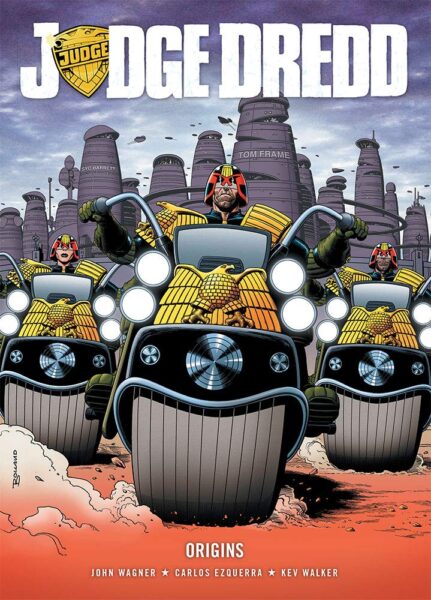Friends:
Beginners Guide: Judge Dredd
Back in episode 16, we had the great pleasure of venturing into another indie comic. A British weekly anthology by the name of 2000AD. The listeners had pulled out another great name for us to talk about it was time for the law himself, Judge Dredd.
Before we get into the character, let’s have a quick look at the publication.
Sci-Fi Age
It was back in 1975 and science fiction films were in the midst of a great decade. Kelvin Gosnell, sub-editor of then IPC Magazines, saw an opportunity too good to miss. He went to the publisher who teamed him up with writers Pat Mills and John Wagner. They had a simple yet ambitious mission; create a weekly science fiction comic book to jump on to popular trends. The three had experience working on both [su_tooltip position=”north” size=”6″ content=”A weekly war comic” close=”no”]Battle Picture Weekly[/su_tooltip] and [su_tooltip position=”north” size=”6″ content=”A weekly adventure comic” close=”no”]Action Comics[/su_tooltip], so had the experience to bring it together. Despite this, IPC, the publisher, had low confidence in its long term success. Proven when editing director John Sanders picked the name for the title; 2000AD, surely that will always remain futuristic.
Doug Church, an art assistant at the time, made the layout and the logo whilst the writing trio worked on their introductory characters. Dan Dare, the space pilot who first appear in Eagle Comics in the ’50s, made his dramatic return. The Harlem Heroes, a basketball team with jetpacks, made their slum dunk first appearance. And M.A.C.H. 1, a British agent enhanced like the six million dollar man, made his shocking debut. Issue one went on sale on 26th February 1977. Conspicuously absent, is a name that will be tied to 2000AD forever. It wouldn’t be a long wait mind you, as Dredd made his debut in issue 2.
Enter The Law
The origins of the lawman go back to that period of preparing for the first issue. Wagner had written a story for Valiant comics called “One eyed Jack”, featuring a no-nonsense New York detective. Mills, looking for stories for the upcoming launch had put together a horror strip featuring Judge Dread, named after a British Ska act. Mills decided the horror story wasn’t suitable for the new publication, but the name intrigued everyone. Wagner suggested they use a character like “One Eyed Jack” but take it to a 2000AD extreme. The two ideas merged, with a slight spelling change, suggested by Gosnell. The team then approached artist Carlos Ezquerra, also of Battle Picture Weekly, with the film Death Race as an inspiration. And so Judge Dredd was born, a motorcycle-riding lawman who tackles criminals with extreme prejudice.
Dredd stories run in real-time, 122 years in the future, excluding the occasional flashback story. The Earth is ravaged by conflict and nuclear fallout. Most of the planet is uninhabitable, a radioactive wasteland known as the cursed earth. The population of the earth squeezed into the remaining small areas. Megacities fill the habitable parts of the world, built of densely populated ‘mega blocks’. Buildings so large, the populations could rival many cities of current earth. These densely populated areas are prone to crime, life is tough and leads many people to resort to other means of satisfaction.
This has led to the creation of the Judge system; police have evolved to street judges, each acting as a police officer, judge and jury. They hold the power of politics, law and enforcement with prejudice. Traditional justice would take too much time to be feasible, including capital punishment, which is phasing out. Coincidentally, many prisoners die attempting to resist arrest.
Justice In The Blood
Dredds ‘birth’ story leads back to Chief Judge Eustace Fargo, founder of the Judge system. As crime increased across the remnants of the United States, President Gurney assigned Fargo Special Prosecutor for street crime. Unable to keep the streets under control, the constitution was amended in 2031, allowing for conviction without due process. Assigned as the first Chief Judge, Fargo created the system that would now underpin justice.
Following a scandal, Fargo would attempt suicide in 2051. Covered up as a heroic act that led to his death, he was placed in suspended animation.
In 2066, as the fight for law and order continued, the memory of the all-powerful Fargo was turning to legend. With technology opening up possibilities we could only dream of, they decided to bring Fargo back. Using samples of his DNA and accelerated cloning, they created Joseph and Rico Dredd.
For a character that has been going almost continuously for over 40 years, its fair to say there’s a lot of backstories. When you consider it’s a weekly publication, it’s hard to put into words just how much story there is. There are the Robot Wars, when the robot workforce caused an uprising, introducing us to Dredds companion Walter the Wobot. The Cursed Earth, where Dredd travels across the country and finds himself entangled in a gang war between Ronald McDonald and The Burger King. Judge Death, when we are introduced to the titular Dark Judge and his companions. The mysterious Dead Man, where we find out that Dredd may not be who we thought he was. We talk about all this and more in the bumper episode, and still, we only scratch the surface. Judge Dredd is proof that comic book characters are complex and grown-up. If only he were more well known.
Steve’s Reading List:
- Judge Dredd: The Complete Case Files 1-5
- Batman/Judge Dredd: Judgment On Gotham
- Batman/Judge Dredd: Vendetta In Gotham
- Batman/Judge Dredd: The Ultimate Riddle
- Batman/Judge Dredd: Die Laughing – Book One
- Batman/Judge Dredd: Die Laughing – Book Two

200AD #2 
One Eyed Jack 
End Of Days 
Origins
